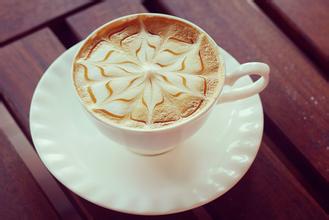Coffee beans made in a Yerga Scheffer siphon pot Flavor Description Taste Treatment Origin
Flavor description of coffee beans made by Yega Xuefei siphon pot
Siphon pot, also known as plug wind pot, is the homonym of English Syphon, is a very common coffee utensils, such as Misha there are three Syphon,Syphon cheap, easy to operate, widely loved by the public, and can brew simple good coffee without destroying the original flavor of coffee, brewed coffee is usually called black coffee. In fact, although Syphon is easy to operate, it is also knowledgeable and vulnerable to many factors, such as temperature, or water, the thickness of coffee powder, and every small detail has its decisive key to affect the taste. Therefore, if you use it casually, the taste will be quite casual. If you cook it carefully, you can get a lot of fun to play with coffee and get high-quality black coffee.
Generally speaking, the unique rich aroma of coffee is the synthesis of the flavor released by the rich substances contained in the raw beans of coffee due to the chemical reactions produced at high temperature. Basically, it can be divided into two major chemical reactions-caramelization (caramelization, oxidation and browning of sugars) and Mena reaction (Maillard reaction, reaction of amino acids with carbohydrates). Both reactions require the participation of carbohydrates, and the rich sucrose in raw beans provides the materials needed for these two reactions. Previous studies also found that there was a positive correlation between sucrose content and coffee bean flavor. From the table below, it can be seen that the content of sucrose (Sucrose) in Arabica is twice as much as that in Robusta, which also explains why the flavor of Arabica coffee beans is better than that of Robsta.
(1) Caramelization: the sugar in coffee beans is caramelized at about 170-200 ℃, which is exactly the melting point of sucrose (185 ℃) and the temperature of the explosion stage when coffee beans are roasted. The product of caramelization is divided into two parts:
1. The dehydration product of sugar is caramel or sauce.
two。 The pyrolysis products are mainly volatile aldehydes and ketones.
Generally speaking, fire-roasted aroma, caramel and color are produced in the caramelization reaction, as well as other aromatic substances such as maltol, Cyclotene, furan and so on. These compounds can also be found in red wine, fruit juices, cream and other foods. However, if caramel is too much in the baking process is not a good thing, but will cause carbonization, making the coffee dry and choking. If the caramel is not enough, it will make the aroma monotonous and lack of layers.
In fact, the siphon pot does have its unique side. As we all know, the temperature of the coffee brewed in the siphon pot is very high, which can generally reach more than 90 degrees. In such a high temperature environment, the substance extracted from the coffee will be more, and the concentration will be correspondingly higher. Have you found that the coffee brewed in the siphon pot is very black? Therefore, it will feel particularly fragrant and smooth, and the coffee will be relatively bitter, which is suitable for the taste of many veterans.
Will all the coffee be so fragrant and smooth when brewed? In fact, not necessarily, we usually use siphon pot coffee beans are Brazil, Mantenin, Blue Mountain and other moderately roasted coffee beans, and these coffee beans have a very thick oil, more heat-resistant, oil will not be too easy to deteriorate. In other words, these coffees are easier to brew, but if you use a siphon pot to boil Columbia, Yega Chuefei and other coffee beans with less fat and roast shallow coffee beans, it will be difficult to control the heat, and the coffee may be spoiled if you are not careful.
Therefore, some beans are boiled in a siphon pot, and the coffee will be particularly delicious. If you want to know more about coffee beans suitable for siphon pot cooking, you need to have a certain understanding of the ingredients and characteristics of coffee beans.

Important Notice :
前街咖啡 FrontStreet Coffee has moved to new addredd:
FrontStreet Coffee Address: 315,Donghua East Road,GuangZhou
Tel:020 38364473
- Prev

Flavor description of coffee beans in Hartmont Manor, Panama
Flavor description of coffee beans at Hartmont Manor in Panama Panama has been among the best coffee producers in the world since three years ago, surprising countries that have been at the vanguard of developer production for many years. Panamanian coffee is mainly produced in the west near the Costa Rican border, producing the best washed coffee. Compared with species at middle and low elevations
- Next

Columbia Snow Mountain Coffee Bean characteristic Manor area Grinding scale treatment method for taste treatment
The eastern mountains of Colombia have rugged terrain and steep slopes and an altitude of 4000 meters above sea level. The climate is affected by different elevations, which makes it show a variety of meteorological zones, resulting in a strong aroma of coffee, moderate acidity, smooth and consistent taste with tobacco flavor. Huila producing area is located in Goran.
Related
- Detailed explanation of Jadeite planting Land in Panamanian Jadeite Manor introduction to the grading system of Jadeite competitive bidding, Red bid, Green bid and Rose Summer
- Story of Coffee planting in Brenka region of Costa Rica Stonehenge Manor anaerobic heavy honey treatment of flavor mouth
- What's on the barrel of Blue Mountain Coffee beans?
- Can American coffee also pull flowers? How to use hot American style to pull out a good-looking pattern?
- Can you make a cold extract with coffee beans? What is the right proportion for cold-extracted coffee formula?
- Indonesian PWN Gold Mandrine Coffee Origin Features Flavor How to Chong? Mandolin coffee is American.
- A brief introduction to the flavor characteristics of Brazilian yellow bourbon coffee beans
- What is the effect of different water quality on the flavor of cold-extracted coffee? What kind of water is best for brewing coffee?
- Why do you think of Rose Summer whenever you mention Panamanian coffee?
- Introduction to the characteristics of authentic blue mountain coffee bean producing areas? What is the CIB Coffee Authority in Jamaica?

